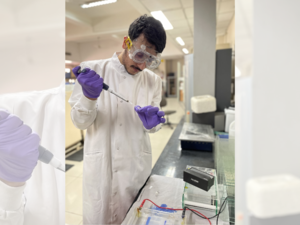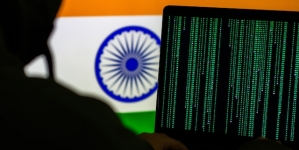-
CANBERRA: India-Australia partnership aims to bridge skill gap for future employment - April 15, 2024
-
HOUSTON: Mumbai boys in the final rounds of FIRST World Robotics competition to be held in Houston - April 14, 2024
-
MADRAS: IIT Madras NPTEL translates thousands of technical courses into several regional languages - April 10, 2024
-
MUMBAI: Shahid Kapoor opens up about the challenges faced by character actors in Bollywood - April 8, 2024
-
NEW DELHI: World Health Day 2024: Date, Theme, History, Significance and Interesting Facts - April 6, 2024
-
LONDON: Indian-Origin Teen In UK Gets “Life-Changing” Cancer Treatment - April 3, 2024
-
BENGALURU: Indian scientists unravel genetic secrets behind lumpy skin disease outbreak - March 30, 2024
-
NEW DELHI: Youngsters’ Increasing Stress Levels, Early Onset of Diseases an Alarming Health Trend: Apollo Hospitals Chief - March 28, 2024
-
MARYLAND: All About Pavan Davuluri, New Head Of Microsoft Windows - March 27, 2024
-
MUMBAI: Pyaar Kiya To Darna Kya turns 26: Kajol says THIS was the symbol of an innocent girl back then - March 27, 2024
BENGALURU: Made for mission life of 6 months, India’s Mars probe completes 7 years in orbit
BENGALURU: India’s Mars Orbiter spacecraft
has completed seven years in its orbit, well beyond its designed mission life
of six months.
“Indeed, a satisfying feeling,” K Radhakrishnan who as the then
Chairman of Indian Space Research Oranisation (ISRO) led the Mars Orbiter
Mission (Mangalyaan) team told PTI on the milestone.
MOM is the maiden interplanetary
mission of ISRO. Launched on November 5, 2013, the probe was successfully
inserted into Martian orbit on September 24, 2014 in its first attempt.
MOM is primarily a technology
demonstration venture and all the mission objectives were successfully met,
according to officials of Bengaluru-headquartered India’s national space
agency.
The main lessons learnt were in the field of design and realisation of systems
and subsystems, launch for interplanetary mission, insertion into other
planet’s orbit, operation of the spacecraft and scientific instruments around
Mars orbit, they said.
The lessons learnt have raised the confidence of ISRO scientists for taking up
future interplanetary missions.
ISRO has been continuously monitoring the spacecraft and its five scientific
instruments, and officials said scientific analysis of the data being received
from MOM spacecraft is in progress.
On the health of the spacecraft, M Annadurai, who was the Programme Director of
MOM, said the spacecraft’s “moving elements are facing some issues and
some of the redundancies we have to switch over.”
“The spacecraft’s health is reasonably good considering that we are in the
seventh year,” Annadurai said.
He expects the spacecraft to have a mission life of probably another one year.
On the reasons for the long mission life, Annadurai said ISRO had done
corrections after learning lessons from the Chandrayaan-1 venture, in terms of
reconfiguring the spacecraft and optimisation of fuel management, among others.
Noting that Earth remote-sensing satellites typically have a mission life of
seven to nine years, he said it was a very satisfying moment that India could
establish that around Mars also, a spacecraft can be in operation for such a
long period.
On some criticism in some quarters that scientific output of the MOM was
“low”, Annadurai said it was more of a technology-demonstration
mission.
He pointed out that the spacecraft was launched by PSLV as GSLV was not in
operational condition then. ISRO could apportion only about 15 kg for
scientific instruments, and the time available for scientists to develop them
was only 18-19 months.
“I don’t think we could have
done better than what we have done,” Annadurai said.
ISRO officials said the
spacecraft has already covered three Martian years (one Martian year is about
two earth years).
“We have seen how changes
happen on the Mars from one season to another, one Martian year to another
Martian year,” they said.
Annadurai said: “We have good inputs on seasonal affects on Mars
atmosphere…surface. The mission has provided meaningful data also”.
























